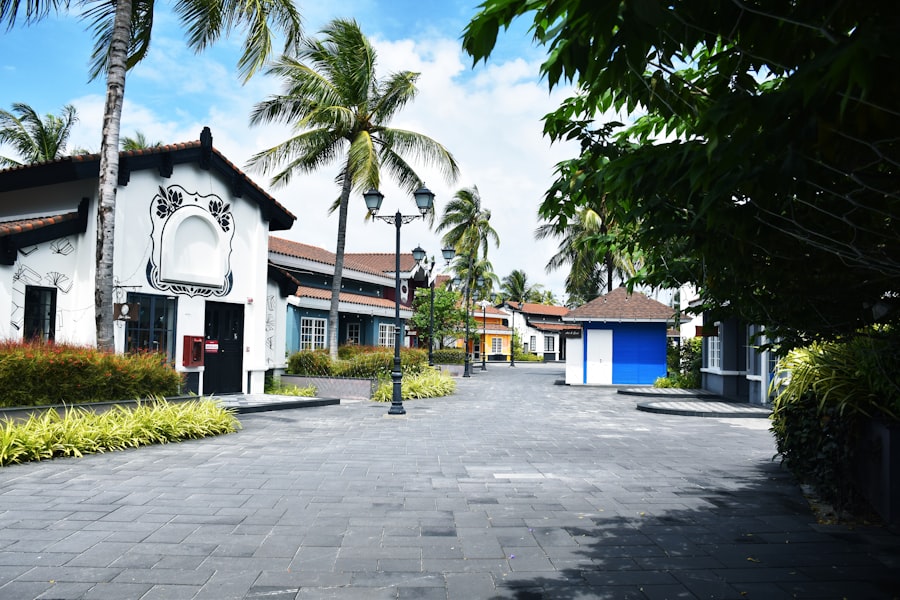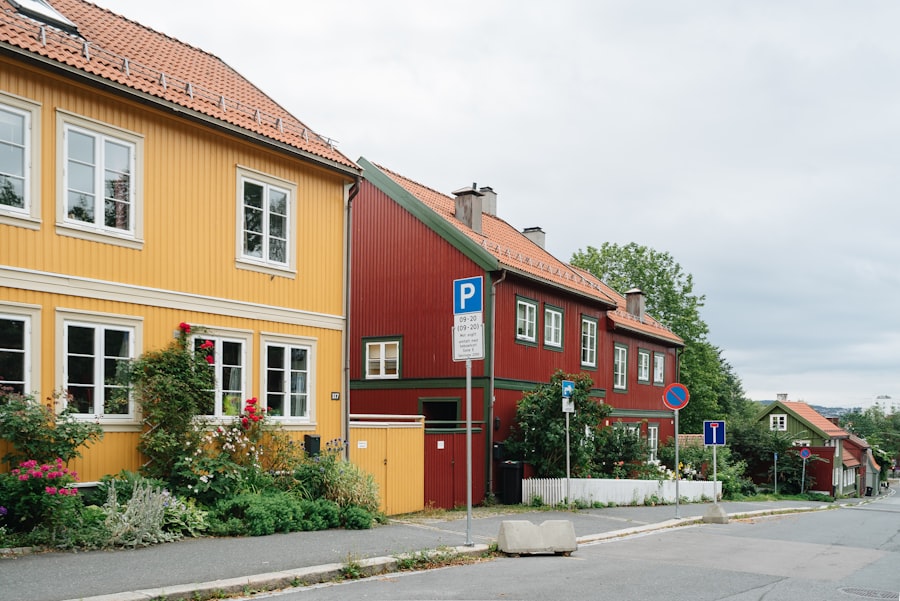Triple wide manufactured homes represent a significant evolution in the realm of prefabricated housing, offering an expansive living space that caters to a variety of lifestyles and family sizes. These homes are constructed in three separate sections, which are then transported to the site and assembled, creating a spacious and often luxurious dwelling. The growing popularity of triple wide homes can be attributed to their ability to provide the comfort and amenities of traditional homes while maintaining the affordability and efficiency associated with manufactured housing.
As more families seek alternatives to conventional housing, triple wide manufactured homes have emerged as a viable solution that combines space, style, and practicality. The construction of triple wide manufactured homes adheres to stringent building codes and regulations, ensuring that they meet safety and quality standards. Unlike single or double wide models, which can feel cramped, triple wide homes offer a generous square footage that allows for open floor plans and multiple living areas.
This design flexibility makes them particularly appealing to larger families or those who desire extra space for entertaining guests. Additionally, the advancements in manufacturing technology have led to improved construction methods, resulting in homes that are not only aesthetically pleasing but also durable and energy-efficient.
Key Takeaways
- Triple wide manufactured homes offer more space and flexibility compared to traditional single or double wide homes.
- The benefits of triple wide manufactured homes include larger living areas, more storage space, and customizable floor plans.
- Design options for triple wide manufactured homes include various layouts, styles, and features to suit individual preferences and needs.
- Cost considerations for triple wide manufactured homes include initial purchase price, installation costs, and ongoing maintenance expenses.
- Energy efficiency and green building features can be incorporated into triple wide manufactured homes to reduce environmental impact and lower utility bills.
Benefits of Triple Wide Manufactured Homes
One of the most significant benefits of triple wide manufactured homes is their spaciousness. With an average width of 24 feet or more, these homes provide ample room for various living arrangements, including multiple bedrooms, expansive living areas, and even dedicated spaces for home offices or recreational activities. This extra space can be particularly advantageous for families with children or those who frequently host gatherings.
The open floor plans typical of triple wide homes foster a sense of community within the household, allowing family members to interact more freely. Another key advantage is the cost-effectiveness associated with triple wide manufactured homes. While the initial investment may be higher than that of single or double wide models, the overall cost per square foot is often lower when compared to traditional site-built homes.
This affordability extends beyond the purchase price; many manufacturers offer energy-efficient options that can lead to significant savings on utility bills over time. Furthermore, the reduced maintenance costs associated with manufactured homes—due to their durable materials and construction methods—can make them an attractive long-term investment.
Design Options and Floor Plans

The design options available for triple wide manufactured homes are extensive, allowing buyers to select a layout that best suits their needs and preferences. Many manufacturers offer customizable floor plans that can be tailored to accommodate specific requirements, such as additional bedrooms, larger kitchens, or dedicated office spaces. This level of customization ensures that homeowners can create a living environment that reflects their personal style while also meeting practical needs.
In addition to customizable layouts, triple wide manufactured homes often feature modern design elements that enhance their aesthetic appeal. Open-concept living spaces are common, promoting a seamless flow between the kitchen, dining area, and living room. High ceilings and large windows are frequently incorporated into designs to create an airy atmosphere filled with natural light.
Homeowners can also choose from a variety of exterior finishes, roofing styles, and landscaping options to further personalize their home’s appearance. The combination of functional design and visual appeal makes triple wide manufactured homes a compelling choice for those seeking both comfort and style.
Cost Considerations
| Cost Considerations | Metrics |
|---|---|
| Cost of Goods Sold (COGS) | The direct costs attributable to the production of goods sold by a company |
| Operating Expenses | The ongoing costs for running a business, such as rent, utilities, and salaries |
| Cost per Acquisition (CPA) | The cost of acquiring a new customer through marketing and sales efforts |
| Return on Investment (ROI) | A measure of the profitability of an investment, calculated as a percentage |
When considering the purchase of a triple wide manufactured home, it is essential to evaluate the various cost factors involved. The initial price of these homes can vary significantly based on factors such as size, design features, and location. On average, buyers can expect to pay anywhere from $100,000 to $200,000 for a new triple wide home, depending on the level of customization and amenities included.
While this price range may seem steep compared to smaller manufactured homes, it is important to remember that the cost per square foot is often more favorable due to the larger living space provided. In addition to the purchase price, prospective homeowners should also factor in ongoing costs such as land acquisition, site preparation, and utility connections. Depending on the location, land prices can vary widely; therefore, it is crucial to conduct thorough research on local real estate markets.
Site preparation costs may include grading the land, installing foundations or piers, and connecting utilities such as water, electricity, and sewage systems. These additional expenses can add up quickly, so budgeting for them is essential when planning for a triple wide manufactured home.
Energy Efficiency and Green Building Features
Energy efficiency is a hallmark of modern triple wide manufactured homes, with many manufacturers incorporating green building features into their designs. These energy-efficient elements not only reduce environmental impact but also contribute to lower utility bills for homeowners. For instance, many triple wide models come equipped with Energy Star-rated appliances, high-efficiency HVAC systems, and advanced insulation materials that help maintain comfortable indoor temperatures year-round.
Moreover, some manufacturers offer solar panel options that allow homeowners to harness renewable energy sources. By integrating solar technology into their homes, residents can significantly reduce their reliance on traditional energy sources while also benefiting from potential tax incentives or rebates offered by local governments. The emphasis on sustainability in the construction of triple wide manufactured homes reflects a growing awareness of environmental issues and a commitment to creating healthier living spaces for families.
Customization and Upgrades

The ability to customize a triple wide manufactured home is one of its most appealing features. Homebuyers can select from a range of upgrades and modifications that enhance both functionality and aesthetics. For example, kitchen upgrades may include granite countertops, custom cabinetry, or high-end appliances that elevate the cooking experience.
Similarly, bathroom renovations can feature luxurious fixtures such as soaking tubs or walk-in showers that transform these spaces into personal retreats. Beyond interior upgrades, homeowners can also choose exterior enhancements such as porches, decks, or landscaping features that improve curb appeal and outdoor living space. Many manufacturers offer packages that bundle various upgrades at discounted rates, making it easier for buyers to create their dream home without exceeding their budget.
This level of customization ensures that each triple wide manufactured home is unique and tailored to the individual preferences of its occupants.
Location and Site Preparation
Selecting the right location for a triple wide manufactured home is crucial for maximizing its potential benefits. Factors such as proximity to schools, shopping centers, healthcare facilities, and recreational areas should be considered when choosing a site. Additionally, zoning regulations must be reviewed to ensure that manufactured homes are permitted in the desired area.
Some regions may have specific requirements regarding foundation types or minimum lot sizes that could impact the feasibility of placing a triple wide home on a particular parcel of land. Site preparation is another critical aspect of the process that requires careful planning and execution. Proper site preparation involves clearing the land of debris, leveling the ground, and ensuring adequate drainage to prevent water accumulation around the home’s foundation.
Depending on local regulations and soil conditions, homeowners may need to invest in additional measures such as installing piers or concrete slabs to support the structure adequately. Engaging professionals who specialize in site preparation can help ensure that these tasks are completed efficiently and in compliance with local building codes.
Financing Options for Triple Wide Manufactured Homes
Financing a triple wide manufactured home can present unique challenges compared to traditional home mortgages due to differences in classification and lending practices. Many lenders categorize manufactured homes as personal property rather than real estate unless they are permanently affixed to a foundation on owned land. This distinction can affect loan terms and interest rates; therefore, it is essential for prospective buyers to understand their financing options thoroughly.
Several financing avenues are available for those looking to purchase a triple wide manufactured home. Conventional loans may be an option if the home is classified as real estate; however, buyers should be prepared for stricter credit requirements and down payment expectations. FHA loans are another popular choice for manufactured home buyers due to their lower down payment requirements and more lenient credit criteria.
Additionally, some lenders specialize in manufactured home financing and may offer tailored loan products designed specifically for this type of housing. In conclusion, navigating the world of triple wide manufactured homes involves understanding various factors such as design options, cost considerations, energy efficiency features, customization opportunities, site preparation requirements, and financing options. By carefully evaluating these elements, prospective homeowners can make informed decisions that align with their lifestyle needs and financial goals.

